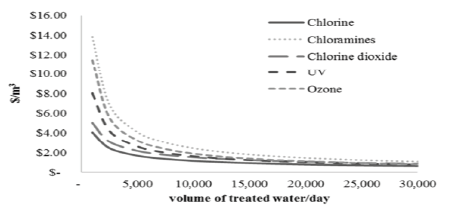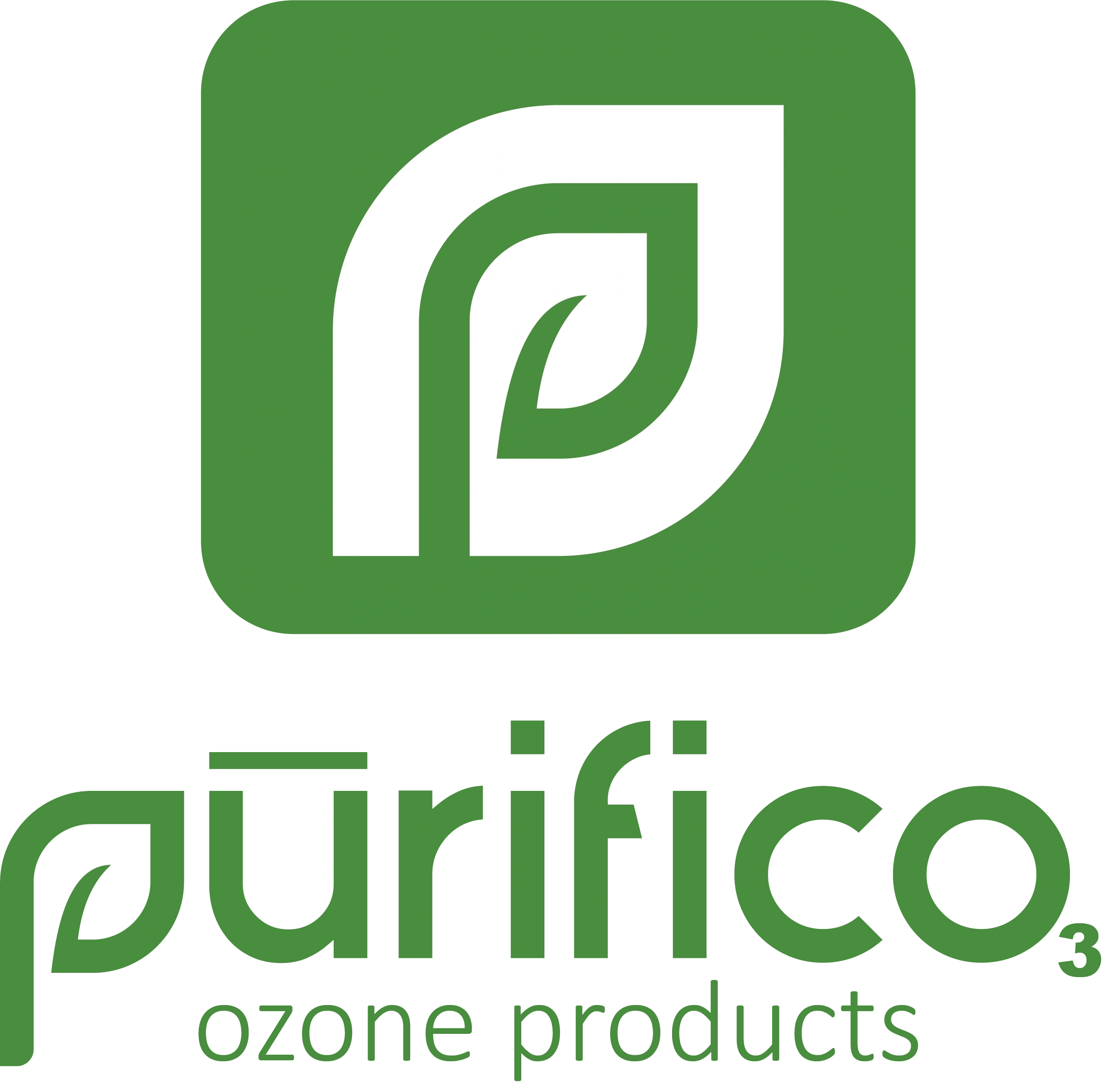Purifico
There are many ways to measure ozone depending on the application, precision needed, budget and practical considerations. For in-line measurement of ozone in water treatment systems, ORP (oxidation reduction potential) probes are typically used. Sensors that provide direct measurement of ozone concentrations in ppm are available, however they are costly and inaccurate in impure water, making them unsuitable for most applications outside the laboratory.
Dissolved ozone concentrations can also be measured through methods such as titration or colorimetric assays, however these measurements need to be performed manually and so cannot be integrated into automated processes. The indigo colorimetric method is useful for the occasional manual monitoring residual ozone levels. Samples can be taken from various points in your irrigation system, to monitor and assess system functionality. These tests are inexpensive, easy to perform and informative. Purifico can supply these tests and provide instructions.
ORP provides an indirect measurement of ozone levels in your water, since it measures the overall tendency for oxidative (loss of electron) or reductive (gain of electron) reactions to occur in solution. This means that any oxidizing or reducing agent will affect ORP values. If ozone is the only oxidant added to solution, then it is safe to assume that any changes to ORP are resulting from ozone. ORP is typically measured in millivolts (mV), where positive values corresponding to oxidative conditions. Automatic dosage of ozone to maintain ORP within a specific range is used to ensure that disinfection is effective at all times. The probes used to measure ORP are the most cost-effective and durable option to monitor and control ozone dosage in automated systems.
Ozone and oxygen are both oxidants, and so ORP levels increase when they are injected into water. Low-quality water is typically anaerobic and has ORP levels <200mV. For agricultural water, effective disinfection usually occurs around 600mV and sterilization at around 800mV.
When ozone is first injected into water, there is a delay before ORP starts rising. This is because ORP measures the overall oxidative state of the water, and initially the ozone is consumed at a high rate while it reacts with contaminants. As contaminants are removed and water purity increases, more ozone is able to accumulate in solution and ORP will increase. At high ORP levels, even the most hardy microbes are destroyed. Since ozone is a short-lived compound, these elevated ORP levels will quickly diminish after ozone injection is ceased. Our high-output ozone systems are able to treat water in-line, in tanks, in large reservoirs such as dugouts and in small lakes.
Ozone is very safe for plants and is environmentally friendly, because oxygen is both the ingredient used to make ozone as well as the product of ozone decay. Plants are generally resistant to oxidative stress and it is usually not a major concern if they are irrigated with water containing residual ozone. In fact, in most situations this is beneficial, as it will create an oxygen-rich environment in the root zone and can eliminate pathogens that reside on or near the plant roots. This is particularly useful for hydroponics producers.
As with plants, ozone is safe to use with livestock because it leaves only oxygen in solution. Ozonation will remove harmful chemicals, eliminating unpleasant odors or tastes, and adds oxygen. This makes your water more palatable and, in our experiences, increases the amount of water that livestock will drink. This can have huge benefits for overall livestock health.
Greater water intake typically means greater dry feed intake. For example with our dairy customers it isn’t uncommon for a dairy farm that has had water issues in the past to see as much as a 20% increase in production due to their cows drinking a higher volume of healthy water.
Ozone is a hazardous gas, and it is important to limit exposure to humans. Our systems are very safe, constructed with multiple safety redundancies to prevent accidental exposure to ozone gas. This includes flow, pressure, vacuum, ORP and atmospheric ozone sensors, as well as automatic shutdown procedures to prevent exposure in case of any malfunctions. Workplace safety requirements vary between provinces or regions, and so while our standard safety processes are robust, Purifico will work with clients to integrate additional safety systems as needed.
Atmospheric ozone can irritate the eyes, upper respiratory tract and the lungs when inhaled. Ozone has a strong chlorine-like odor that can be detected at very low levels (<0.01ppm). In most places, the 8-hour exposure limit for workers is approximately 0.08ppm and the short-term exposure limit is 0.2ppm. Our systems are equipped with ambient ozone sensors that shutoff ozone production if a leak is detected. Additional ambient ozone sensors, placed throughout a facility, can be integrated into the automatic shutoff of our systems. These features are fully programmable to accommodate different situations. Between the durability of PūrificO3 equipment and our diligent safety designs, our systems deliver ozone to your water while keeping it out of your air.
| Ozone concentration | Duration of exposure | Symptoms |
| 0.01ppm | – | Odor can be detected |
| 0.1ppm | – | May experience minor eyes, nose or throat irritation |
| 0.10-0.25ppm | 2-5 hours | Headache, dry cough and some reduction in lung function |
| 0.3ppm | 2 hours | reduction of lung function during moderate exercise |
| > 1.5ppm | 2 hours | Severe lung irritation, coughing, pulmonary edema, reduced ability to think clearly |
| 11 ppm | 15 minutes | Rapid unconsciousness |
| 50 ppm | 30 minutes | Fatal |
Toxicological Effects of Ozone, sourced from WorkSafeBC
The cost of implementing ozone is facility-specific, since it will depend on the amount of ozone required, the number of areas where ozone is used and the purchase of optional equipment (e.g. filtration systems, safety systems, AOPs etc.). Contact us for a quote. The costs of Purifico systems are almost entirely upfront. Unlike systems with consumables, the volume of water treated increases over time with almost no added cost. Most of our customers begin to see overall cost savings after 2-3 years of operating our systems.
Like in agriculture, the cost of disinfecting municipal drinking water depends on the volume of water treated. The greater the amount of water treated, the lower the cost of ozone-based disinfection compared to the alternatives. A study of water disinfection costs across Canadian municipalities found that ozone is less than that of UV or chlorine-based systems after approximately 30,000 m3 of water treated. When the economic costs associated with having toxic by-products in the municipal water supply are considered, ozone becomes the less expensive option much sooner. Like humans, crops and livestock are harmed by the residues left in water from chlorine-based water treatment. Research shows that for medium- and large-scale operations, ozone is more effective in terms of cost and killing microbes.

The relationship between volume of water treated and the cost of different disinfectants.
The real financial benefits from using ozone are hard to quantify, because healthier crops/livestock, bigger yields and better quality product impacts revenue in various ways. With the superior disinfection of ozone, crop irrigation water can safely be recycled for potentially massive cost savings. Every facility is different, but in our experience the benefits far outweigh the costs of our water treatment systems. Purifico will improve your bottom line by decreasing costs and increasing revenue.
